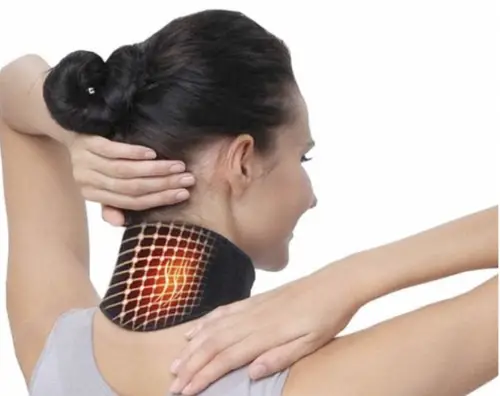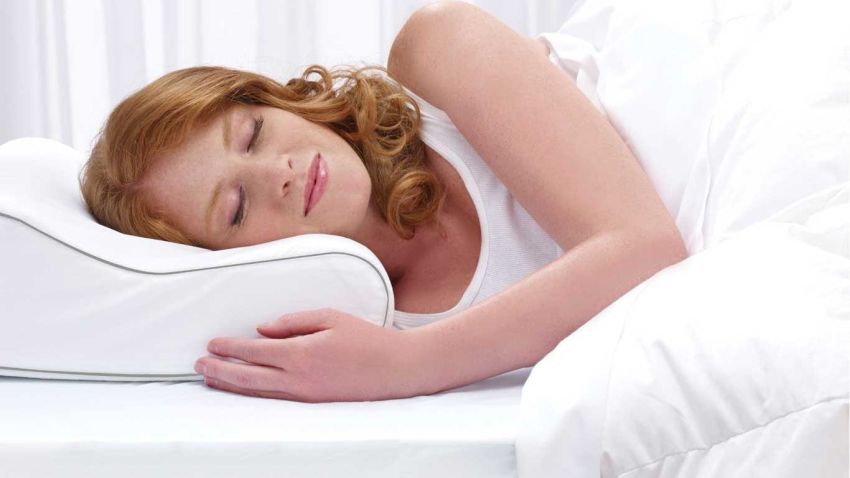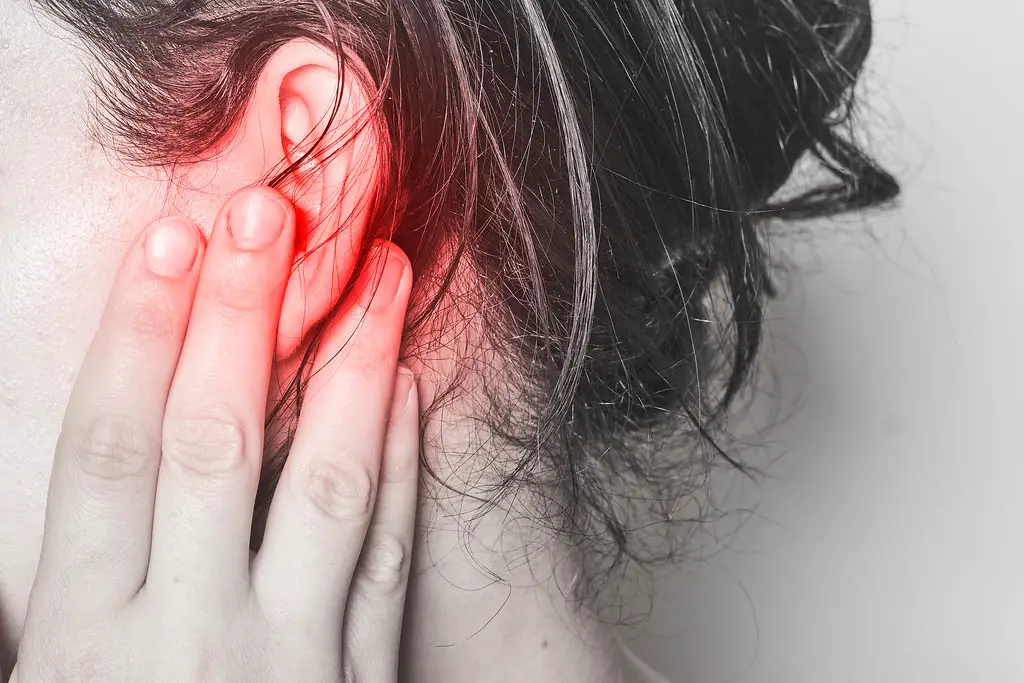You suffer from neck pain and you no longer know what to do to relieve yourself? Your doctor or someone close to you may have suggested that you wear a cervical collar, but you wonder if this device is really beneficial and safe for your health.
If so, look no further, this article is for you! We will give you all the information you need to choose the most suitable cervical collar for your situation.
Indeed, the cervical collar can be very useful to relieve cervical pain in many pathologies, but it is important to choose the right model as well as use it well so as not to aggravate the situation.
So, if you finally want to say goodbye to your neck pain thanks to the purchase of a cervical collar, read this article to the end and find out everything you need to know about this medical device! In particular its indications, its limits, what science says about it, our recommendations (best products) and our opinion... In short, everything you need to make an informed and wise choice!
| Product | Cervical collar or "neck brace" |
| Benefits | – Immobilization of the neck; – Relief of certain neck pain; – Useful in case of cervical osteoarthritis, torticollis, cervicobrachial neuralgia… |
| Drawbacks | – Wearing it for a long time can weaken the neck muscles. |
| alternatives | Products intended for the prevention of neck pain: – Massaging cushion cervical traction ; – Ergonomic pillow; - Office chair ergonomic; - Posture corrector. |
| Our opinion | – The cervical collar is an effective device in many pathologies, but it must be worn temporarily to avoid certain complications. |
Our recommendations
Last updated on 2024-03-08 / Affiliate links / Images from the Amazon Partners API
What is a cervical collar? What's the point ?
Un cervical collar, also referred to as "neck brace", is an orthopedic device that is worn around the neck and supports the head. It has the function to immobilize, at least limit movement cervical vertebrae in order to reduce pain and stiffness during certain common pathologies such as cervical osteoarthritis (cervicarthrosis), whiplash, cervico-brachial neuralgia or torticollis.
Cervical collars are also found in the emergency kits of first aiders (paramedics, firefighters, SAMU doctors, etc.), as they are very useful for resting the cervical vertebrae and prevent the risk of bone displacement in the event of neck trauma (protection of the cervical spinal cord which could be injured after a traffic accident for example, which would lead to quadriplegia).
When is it advisable to use a neck brace?
Here are some of the situations where wearing a cervical collar may be beneficial:
- Cervical sprain : in cases of whiplash, the cervical collar is often prescribed to immobilize the cervical vertebrae and promote healing. This is because immobilization helps limit movement of the neck, which reduces pain and helps prevent muscle tension and spasms that can occur after a cervical sprain acute.
- Cervical fracture: in the event of a cervical fracture, the cervical collar is used to immobilize the cervical vertebrae and prevent any movement that could aggravate the fracture and lead to serious neurological damage (damage to the spinal nerves or spinal cord).
- Chronic neck pain: for chronic neck pain, the cervical collar can be used on a temporary basis to provide relief and prevent movement that could make the pain worse. However, be careful not to use it excessively.
- Cervical osteoarthritis: the cervical collar is an effective solution for managing “attacks” or “flares” of osteoarthritis which are characterized by an increase in inflammation and neck pain.
- Common torticollis: the cervical collar can be used as an analgesic method in case of common torticollis, a common neck condition characterized by painful contracture of the sterno-cleido-mastoid muscle following a bad sleeping position, sudden movement, violent effort...
- Cervical disc herniation: the cervical collar is used to reduce pressure on nerves and relieve pain.
- Cervico brachial neuralgia : this pathology causes pain (radiating in the upper limb) due to compression of the cervical nerve roots that emerge from the spine. Wearing a cervical collar, keeping the spine in a neutral position, can help reduce this compression and therefore provide pain relief.
- Cervical trauma: In the face of any major trauma or polytrauma (traffic accident, public highway accident, etc.), a rigid cervical collar is systematically placed on the victim in order to protect his or her cervical spine, even in the absence of signs indicating neck involvement (cervical spine trauma is considered to exist until proven otherwise, i.e. until it is ensured). absence of fracture or other imaging impairment).
- ENT infection: Ear, nose and throat (ENT) infections, rare in adults but very common in children, are often a source of neck pain. A cervical collar can sometimes be put in place to relieve these during the recovery period.
Furthermore, the cervical collar is often prescribed in postoperative for patients who have undergone cervical surgery such as a discectomy, cervical fusion or laminectomy.
Indeed, after surgery, the cervical vertebrae can be unstable, they require a immobilization period to promote healing and prevent complications (pain, secondary displacements, etc.).
Le cervical collar therefore helps maintain the cervical vertebrae in a neutral position, reducing pain and limiting movements that could aggravate the injury. It also allows to support the neck muscles, who can be weakened after surgery, and to reduce muscle tension and spasms.
Cervical collar or neck brace: is it bad for the neck?
The cervical collar has advantages and disadvantages, which depend on the use and the individual situation of each patient:
Advantages of the Cervical Collar
- Reduction of neck pain: By immobilizing your cervical vertebrae and limiting your neck movements, the cervical collar can effectively reduce your pain if you suffer from a cervical condition such as a sprain, osteoarthritis, torticollis...
- Prevention of complications: thanks to the strong support of your cervical vertebrae, the cervical collar can protect you from certain complications such as neurological lesions or vertebral displacements if you have suffered a neck trauma (fracture of the spine).
- Help with recovery: the cervical collar can help you recover from a cervical injury by reducing muscle tension and spasms that can impede and delay your healing.
- Improved posture: used correctly, the cervical collar can help correct your posture by supporting your head and reducing pressure on your shoulders and back.
- Reduction of muscle tension: the cervical collar can allow you to reduce muscle tension in the neck area by immobilizing your cervical vertebrae, which helps prevent muscle spasms and fatigue.
- Aid in recovery after surgery: The cervical collar may be prescribed to you during the postoperative period to support your head and neck, which may reduce pain and discomfort.
- Facilitates daily activities: by reducing pain and muscle tension, the cervical collar can make your daily activities such as walking, reading, cleaning, cooking or driving easier.
Disadvantages of Cervical Collar
- Limitation of movements: the cervical collar limits movement of the neck, which could lead to a long-term loss of strength and mobility (we will see later that it is not recommended to wear a cervical collar for a long time).
- Discomfort: the cervical collar can be uncomfortable to wear for long periods of time, particularly if it is ill-fitting or worn too tightly.
- Aggravation of certain injuries: inappropriate use of the cervical collar (untimely maneuvers when putting it on) can aggravate certain cervical injuries such as unstable fractures or vertebral dislocations.
- Risk of muscle atrophy: Prolonged use of the cervical collar can weaken neck muscles and make long-term recovery more difficult (muscle atrophy from lack of neck muscle stimulation).
- Risk of respiratory complications: In some cases, use of the cervical collar can interfere with breathing and cause respiratory complications, particularly if the cervical collar is ill-fitting, worn for an extended period, or while sleeping.
- Risk of blood circulation problems: the cervical collar, if too tight or ill-fitting, can restrict blood flow to the neck area, which can lead to numbness, tingling, and other symptoms associated with poor circulation (hence the importance of a good fit and choosing the right size cervical collar).
- Risk of increased pain: in some cases using the cervical collar may increase pain instead of reducing it, particularly if the cervical collar is not suitable for the underlying cause of the neck pain (hence the importance of a medical consultation before using a cervical collar or other medical device).
- Psychological impact: Prolonged use of the cervical collar can have a psychological effect on pain perception and long-term recovery, as it can make the pain appear to be greater than it actually is.
What are the alternatives to cervical collars?
The main function of cervical collars is immobilize the cervical spine in order to relieve some pain, limit muscle tension or prevent possible displacement after neck trauma.
Apart from a few situations where the use of a cervical collar is mandatory (cervical trauma, period following an operation on the cervical spine, etc.), there are many conditions that can be relieved other than with this device: application of heat or cold to the painful area, use of certain plants and natural remedies, physiotherapy sessions, acupuncture, osteopathy, anti-stress therapies…
Moreover, the best weapon against neck pain is prevention! Here are some products that it is advisable to adopt to protect your neck and prevent pain that would require you to wear a cervical collar:
Ergonomic pillow
To protect your neck during sleep, nothing better than a ergonomic pillow! it is actually a type of pillow specially designed to provide a better head support and alignment, neck and spine during sleep. It is strongly recommended for people suffering from neck pain, as well as those suffering from headaches, shoulder pain or back pain related or not to the sleeping position.
The ergonomic pillow is designed to reduce pressure on points of contact with your head and neck by adapting to the morphology of the latter.
Some ergonomic pillows have a specific shape to provide a lateral support for your neck or for your entire spine.
Last updated on 2024-03-08 / Affiliate links / Images from the Amazon Partners API
Ergonomic office chair
If you spend long hours in front of a computer, you may benefit from a ergonomic office chair. This is designed to give your entire spine a optimal support, and to prevent pain and injury related to prolonged posture at work.
Ergonomic chairs are indeed equipped with several functionalities allowing a support for your spine while you work : a height-adjustable headrest, a backrest adjustable in inclination and in height, adjustable armrests, a reclining seat... In short, everything you need to effectively prevent neck pain!
Last updated on 2024-03-08 / Affiliate links / Images from the Amazon Partners API
Do not hesitate to consult our article on ergonomic office chairs to choose the product that best suits your needs!
Posture corrector
Very often, neck pain is due to the prolonged maintenance of bad postures. To fight effectively against these, you can get a posture corrector, a body-worn device that aims to correct your back alignment and shoulder position.
Indeed, a posture corrector is designed to support your spine et realign your shoulders into an optimal position. When worn correctly, it can help prevent and relieve neck pain as well as back pain.
As with the cervical collar or lumbar corset or other support devices, the posture corrector should not be worn all the time, as the muscles also have to work to maintain good posture.
It is therefore recommended to use it in a way transitory in complement of muscle-strengthening and stretching exercises to maximize its benefits.
The purpose of this device is to relearn how to maintain good posture yourself at all times, not to do the work for you!
Last updated on 2024-03-08 / Affiliate links / Images from the Amazon Partners API
Do not hesitate to consult our article on posture correctors to choose the one that best suits your condition!
Cervical traction massage cushion
Un cervical traction massage cushion is a device that allows gentle and progressive traction on the cervical spine (neck) to relieve cervical pain.
It usually consists of a airbag shaped like a horseshoe that fits around the neck and can be inflated using a hand pump to exert pressure traction on the cervical vertebrae.
Some cervical traction massage cushions are also equipped with functions of massage as well as heat to enhance the therapeutic effects.
Le cervical traction massage cushion is ideal for relieve neck pain by reducing pressure on intervertebral discs and nerves, improving blood circulation et en promoting relaxation of the neck muscles.
It can be very helpful for people with neck pain, torticollis, hernias cervical discs, cervicobrachial neuralgia and others cervical problems.
If you or someone close to you suffers from neck pain, do not hesitate to get this device which can have a very interesting analgesic effect!
No product found.
What does science say about the use of the cervical collar?
The use of cervical collar is a subject that has caused many in the medical and scientific community to sink their teeth. While some studies suggest that prolonged use of the cervical collar may have negative effects about healing cervical pain, others have found the cervical collar to be beneficial in many pathologies of the spine.
For example, a study published in 2002 in the British Medical Journal concluded that the use of a cervical collar to treat acute neck pain was not no more effective than conventional treatment, and prolonged use of the cervical collar could even delay healing.
However, a systematic review of the literature published in 2010 in the journal Spine found that the cervical collar can be beneficial for some patients with neck pain, especially those with acute neck pain. The review authors also stressed the importance of a appropriate and limited use cervical collar, in order to minimize the risk of negative side effects (muscle atrophy, joint stiffness, psychological impact, etc.).
In general, scientists and health professionals agree that the cervical collar is beneficial provided follow his instructions as well as use it appropriately.
My opinion as a physiotherapist
Like any health professional, I rely on the results of studies and official recommendations provided by scientific research.
According to these, the cervical collar can be a useful tool in certain cases of neck pain or cervical trauma. However, it is not suitable for all patients and should not be used lightly.
So, if you suffer from neck pain, it is important to consult a health professional so that the latter determine the cause of your symptoms and can prescribe a appropriate treatment.
Moreover, from my experience and the cases that I take care of in my daily practice of physiotherapy, I can only confirm the conclusions of the various studies according to which the prolonged wearing of a cervical collar can weaken the muscles of of, cause a muscle atrophy et worsen long-term pain.
Therefore, the cervical collar should only be used under the supervision of a healthcare professional and for an limited time.
You can obviously momentarily wear a cervical collar to relieve your neck pain while waiting to consult your doctor and have a treatment adapted to your condition.
How to choose a cervical collar?
Before buying a cervical collar, it is important that you consider a number of factors: your size and morphology, the level of support and immobilization required, the duration of use…
Size and morphology
It is important to choose a cervical collar adapted to your size and your morphology in order to benefit from effective and comfortable support.
In fact, an ill-fitting collar can exert a excessive pressure on certain areas of your neck, causing additional pain and discomfort.
Also, a cervical collar that is too big or too small will not properly fulfill its function of maintaining the cervical vertebrae. We therefore advise you to take the accurate measurements of your neck as well as refer to the manufacturer's instructions to choose the most suitable model.
To choose the right size for your cervical collar, you must measure the circumference and the height of your neck:
- Height: place the tape measure from under your chin to the hollow of your trachea.
- Round : measure the circumference of your neck using the tape measure (do not tighten or loosen the tape measure too much).
If in doubt, do not hesitate to seek advice from your doctor, your pharmacist, your physiotherapist...
Level of support and immobilization
You should know that cervical collars are available in several models depending on the level of immobilization required. You can quickly get lost...
To help you, we present the 4 main types of cervical collars and their specific characteristics:
- The C1 cervical collar: it's a cervical collar flexible, foam and fabric covered. It offers light and temporary support, limits head movements without completely immobilizing the neck, and has an analgesic effect thanks to the heat it provides (relaxing thermal effect). It is ideal for relieving the neck muscles for a short period, especially in the case of torticollis, while leaving a certain degree of freedom of movement making it possible to carry out daily activities.
- The C2 cervical collar: there is semi-rigid, low thickness and has a bead of comfort in general. It offers average support and is often not height adjustable.
- The C3 cervical collar: there is rigid and often offers chin support (chin support). It is generally adjustable in height to adapt to the morphology of the patient and offers average support for the cervical spine. If you choose the model with chin support, your muscles will be less tense.
- The C4 cervical collar: also called cervical collar, has a dense thermoformed foam with reinforcements. It provides thoracic extension and reinforced support, limits head rotation thanks to occipital, sternal and chin support. It is ideal for emergency situations and provides excellent immobilization.
In a very schematic way, the more serious and intense the pain, the more the cervical collar must be immobilizing, imposing and rigid with several supports (chin, occipital and sternal).
| Collar type | Features |
| C1 " Soft " | Light temporary support Does not completely immobilize the neck Analgesic effect by heat Useful in preventing pain |
| C2 "Semi-rigid" or "semi-firm" | Medium support Reinforcement pad Ideal for torticollis |
| C3 “Rigid” or “Firm” | High support Sometimes chin support present Often adjustable in height Indicated in case of osteoarthritis crisis, sprain or cervical fracture |
| C4 "Cervical brace" | Reinforced supportTotal immobilizationAdjustable in heightSeveral supports (chin, occipital, sternal)Ideal in the event of trauma (fracture of the neck) or after surgery. |
Practical application
It's good, you got yourself a cervical collar! Now it's about using it the right way! We therefore answer in what follows the most frequent questions of new users of the cervical collar.
How to use a cervical collar?
Using a cervical collar is very simple, just follow these few steps:
- Open your cervical collar (generally, cervical collars open and close using a hook-and-loop system or straps).
- Place the cervical collar around your neck, making sure the top edge of the collar is under your chin.
- If it is an adjustable model, adjust the height of the collar according to your height and your morphology.
- Make sure that the collar is well positioned and that it does not slip.
- Fasten collar straps or closures, making sure they are snug, but not too tight.
- Test the collar by tilting your head forwards, backwards and to the sides (avoiding hurting yourself of course!) to make sure it holds your neck properly.
When should you wear your cervical collar?
As recommended by scientists and health professionals, avoid wearing your cervical collar for prolonged periods so as not to become physically and psychologically dependent on this device.
- You can wear it only in certain situations to protect your neck, support it and prevent pain, including:
- When you have a sharp pain following a false movement (torticollis).
- When you are going through a painful crisis related to a pathology such as cervical osteoarthritis, cervico-brachial neuralgia...
- If you want to support your neck when carrying out certain daily tasks that can cause pain (cleaning, washing up, cooking, sewing, etc.).
- If you want to resume your professional activity after a neck trauma (sprain or fracture properly treated).
How to wash your cervical collar?
Le cleaning a cervical collar depends on material type of which it is made. In general, you will only need to follow the manufacturer's instructions which are mentioned in the device instructions.
However, here are some general advice to clean your cervical collar:
- Remove all removable parts of the cervical collar, especially hard plastic or metal parts.
- Hand wash the cervical collar in warm soapy water. You can use a mild soap or detergent specifically designed for cleaning braces.
- Rinse the cervical collar well with clean water to remove all soap residue.
- Allow the cervical collar to air dry away from any direct heat source (such as a radiator).
- Never use bleach or other harsh chemicals to clean your cervical collar as this may damage the material.
Some cervical collars cannot be washed, these must be cleaned with a clean, damp cloth. Always check the manufacturer's instructions before cleaning your cervical collar in order to preserve it and be able to use it for a lifetime (even over several generations)!
Be careful, if you want to wash your cervical collar at the machine (obviously after removing all the rigid removable parts), set the temperature to max. 30° (washing at low temperature) to prevent it from losing its elasticity and tension.
Can you sleep with a cervical collar?
It is generally not recommended to sleep with a cervical collar, unless otherwise indicated by your doctor and strict compliance with certain instructions.
Indeed, the wearing a cervical collar while sleeping peut obstruct your breathing et block your blood circulation.
If you need to wear a cervical collar at night for medical reasons (such as after a spinal fracture or after surgery), your doctor will give you instructions. specific instructions on how to wear it (sleep on your back, do not tighten the collar too much, sleep with a memory foam cushion, be watched by a third person, etc.).
My name is Katia, I am specialized web editor in writing medical articles. Being passionate about medicine and writing, I set myself the goal of making medical information accessible to as many people as possible, through the popularization of even more complex scientific concepts.






















